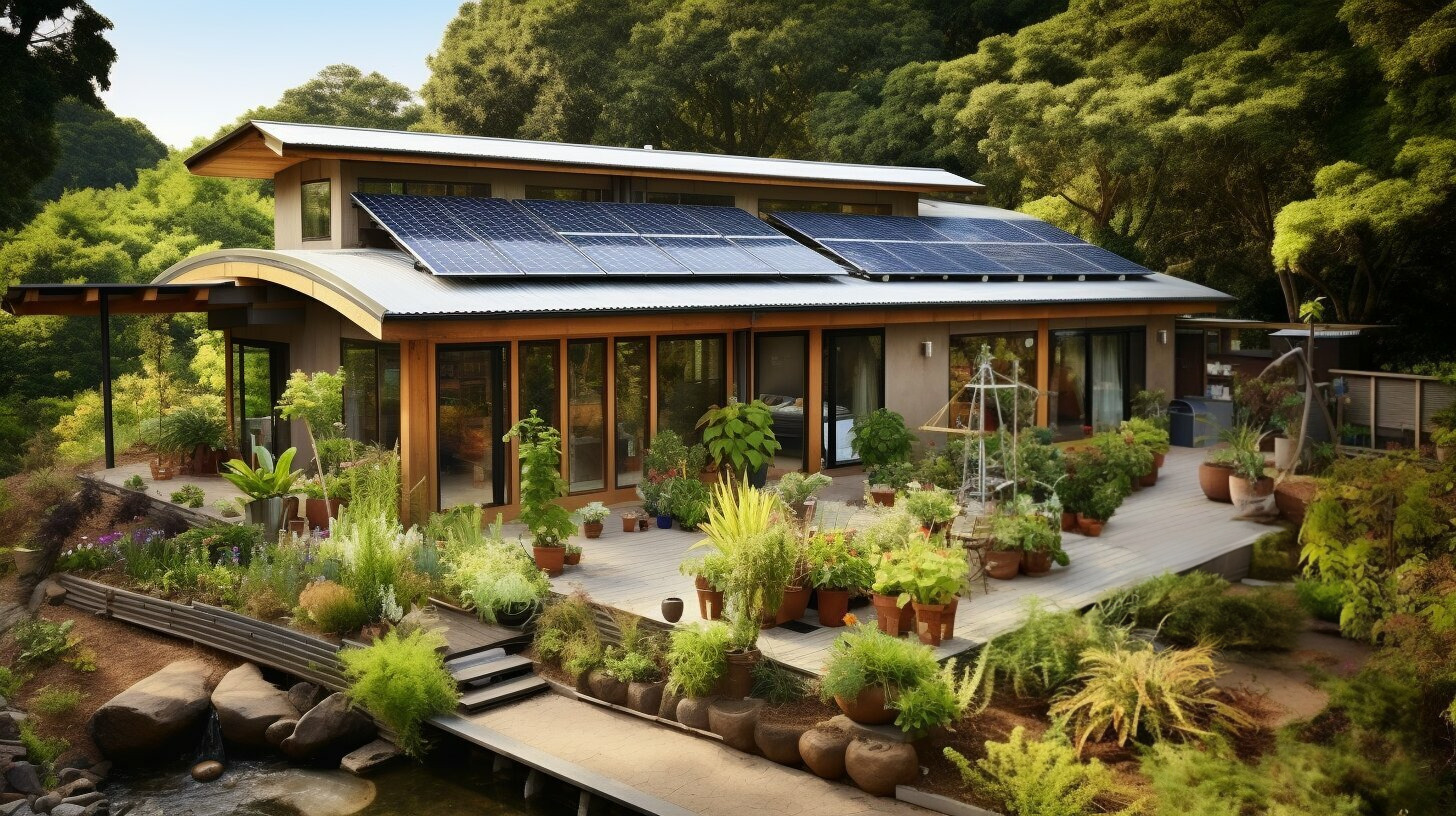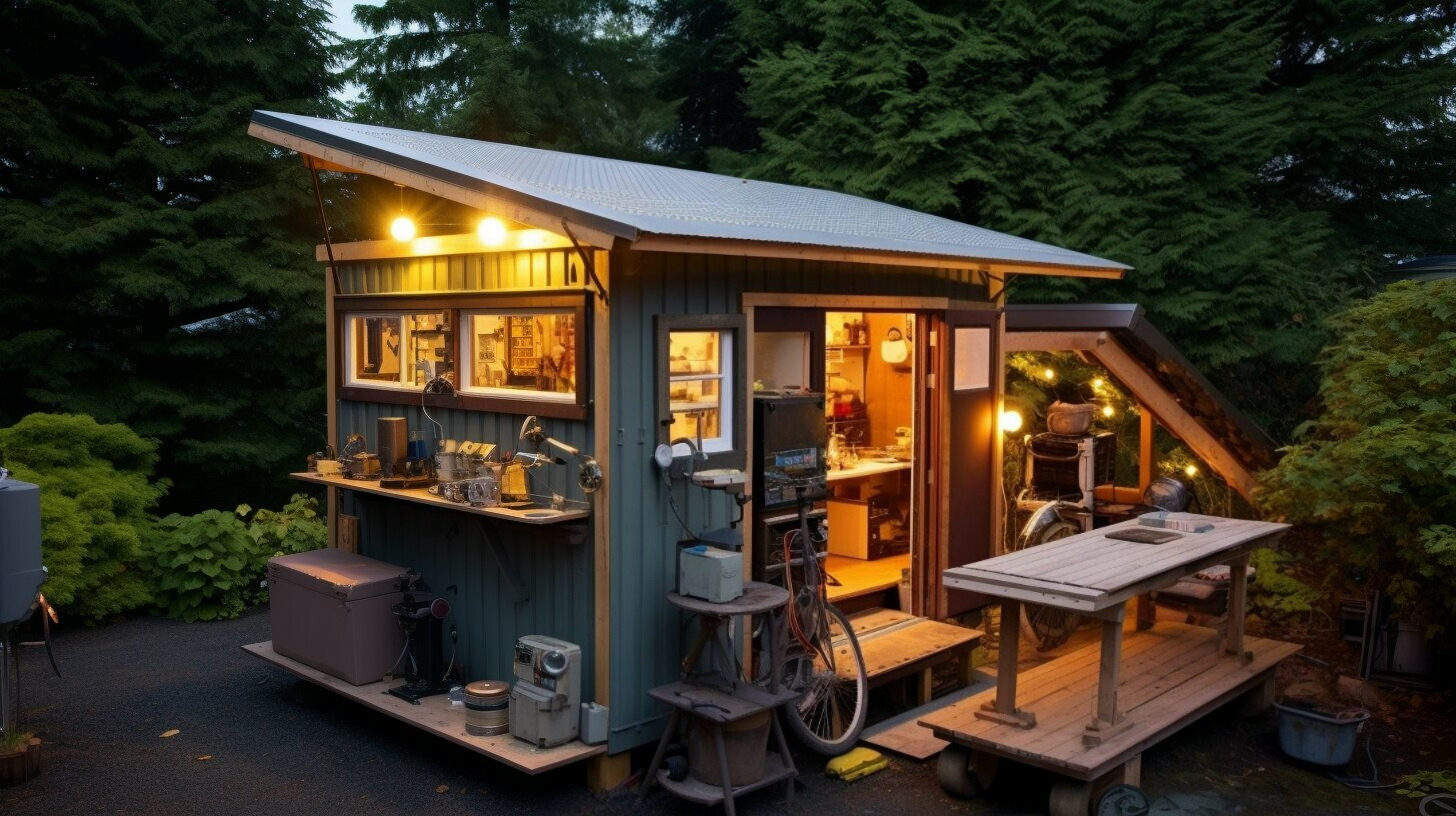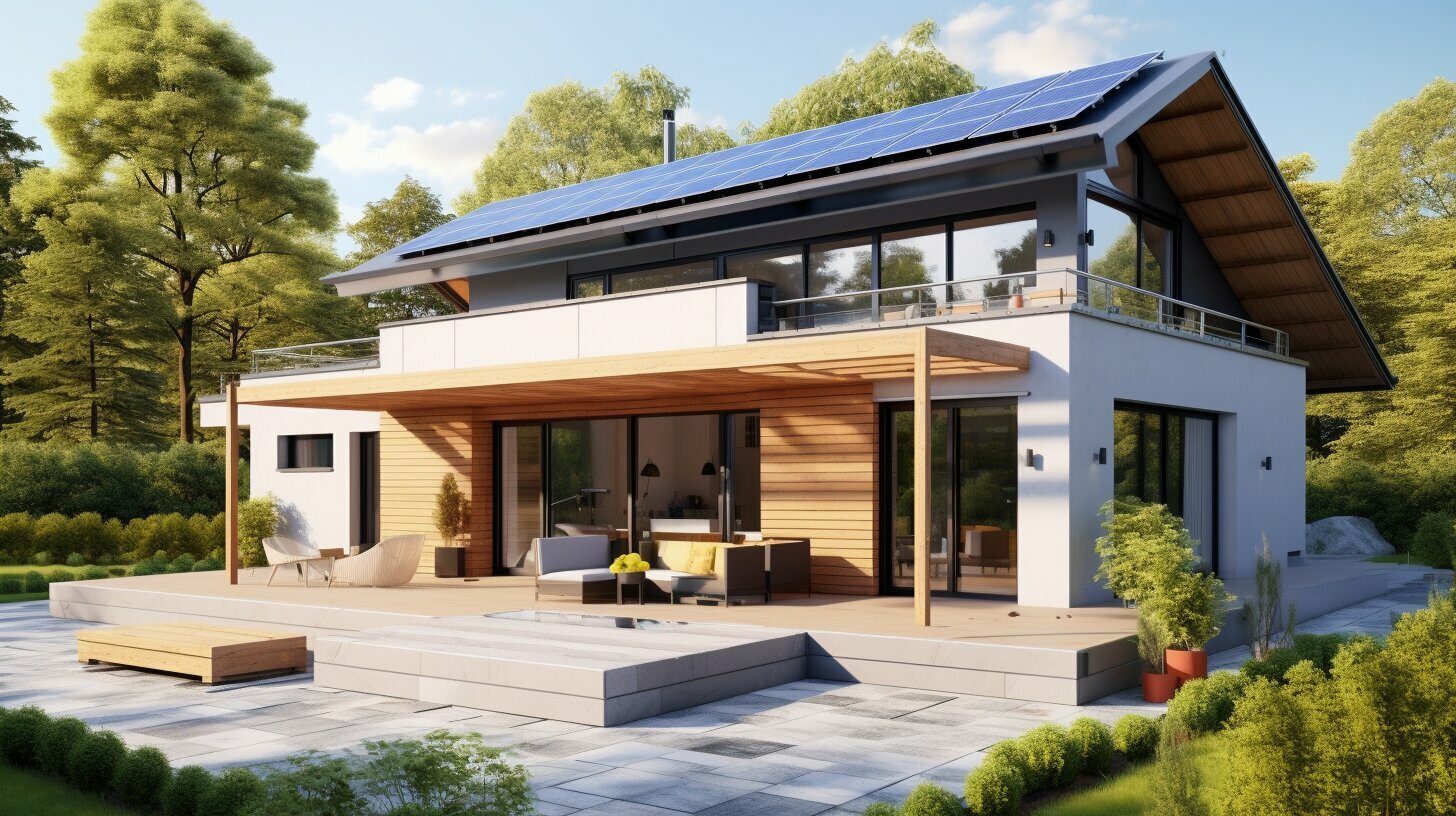Are you interested in creating a home that allows you to live sustainably and independently, while minimizing your impact on the environment? Building a sustainable off-grid home may be the answer for you. By disconnecting from traditional utilities and embracing a self-sufficient lifestyle, you can reduce your carbon footprint and create a home that aligns with your eco-friendly values.
In this guide, we will explore the process of building a sustainable off-grid home, from understanding the principles of off-grid living to choosing sustainable building materials and harnessing renewable energy sources. We will also delve into techniques for managing water and waste sustainably, as well as enhancing the overall ecological balance of your surroundings.
Key Takeaways
- Building a sustainable off-grid home allows you to live independently and sustainably while preserving the environment.
- Understanding the principles of off-grid living is important for a successful sustainable home build.
- Designing an energy-efficient home and harnessing renewable energy sources are key aspects of sustainable living.
- Managing water and waste sustainably and choosing sustainable building materials are crucial for reducing environmental impact.
- Enhancing the overall ecological balance of your surroundings is an important aspect of sustainable living.
Understanding Off-Grid Living
Living off the grid means that you are completely self-sufficient and not dependent on traditional utilities such as electricity, gas, or water supply. It’s an excellent way to reduce your environmental footprint and live a sustainable lifestyle. By generating your own power and managing your resources, you can have a positive impact on the environment and save money.
Embracing off-grid living requires a shift in mindset. You must be willing to adapt to a simpler lifestyle, reduce your energy consumption and waste, and be mindful of your environmental impact. Self-sufficient living requires careful planning, preparation, and a willingness to learn new skills.
Disclosure: When you buy through links on our site, we may earn an affiliate commission.
Building an off-grid home requires a significant investment of time and resources, but the rewards can be immense. By living off the grid, you will have greater control over your life and the environment around you. You will also be part of a growing community of people who are committed to sustainable living and reducing their impact on the planet.
If you’re considering off-grid living, it’s important to research and understand the principles of self-sufficient living. With careful planning and preparation, you can build a sustainable home that aligns with your values and allows you to live a more fulfilling and environmentally-conscious life.
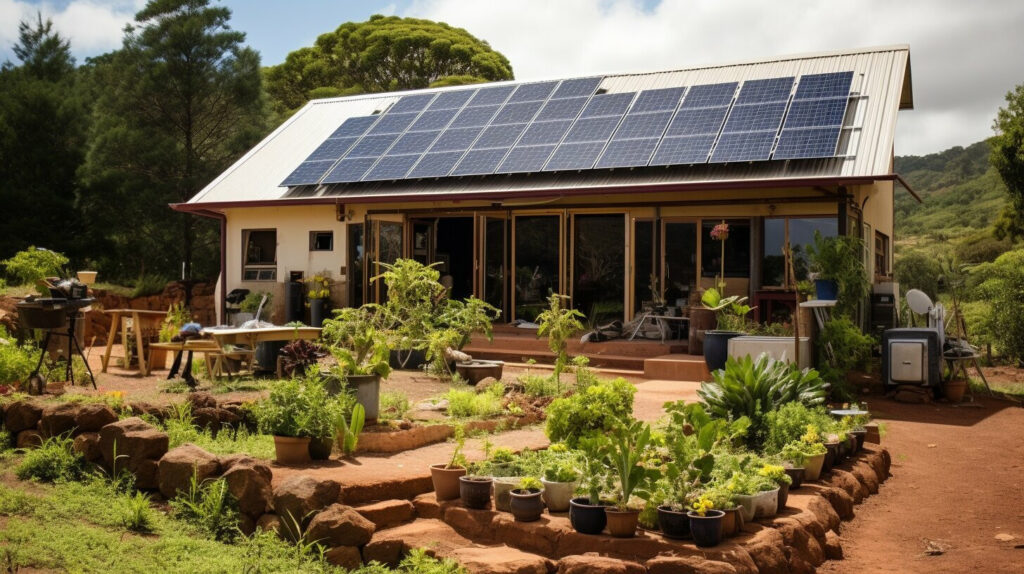
Designing an Energy-Efficient Home
Designing an energy-efficient home is a critical aspect of building a sustainable off-grid home. By prioritizing energy efficiency, you can minimize your environmental footprint and reduce long-term energy costs.
One way to achieve energy efficiency is to incorporate green home design principles into your off-grid home. Passive house design, for example, involves maximizing natural light and ventilation while minimizing thermal bridging. This design approach can significantly reduce heating and cooling requirements, resulting in a more comfortable living space and reduced energy consumption.
Another essential aspect of energy-efficient construction is the use of sustainable building materials. Materials such as reclaimed wood, recycled insulation, and sustainably-sourced timber can help minimize the environmental impact of your off-grid home while also providing long-term durability and energy efficiency.
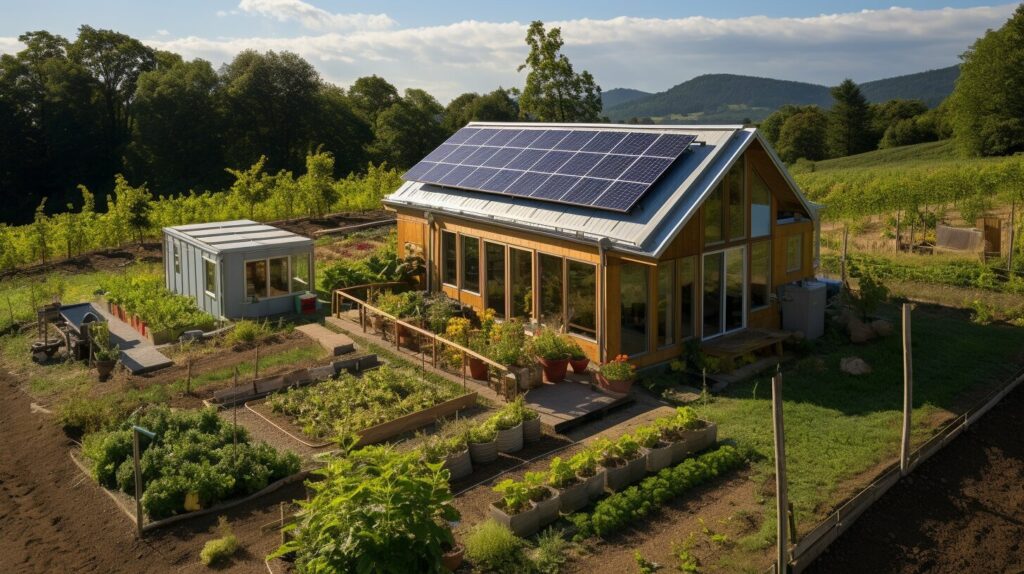
Additionally, incorporating energy-efficient appliances, such as LED lighting and low-flow toilets and showerheads, can further reduce energy consumption in your off-grid home. Investing in high-quality windows and doors can also help minimize heat loss and air leakage, resulting in energy savings and improved comfort.
Overall, designing an energy-efficient home is a critical component of building a sustainable off-grid home. By incorporating green home design principles and using sustainable building materials, you can reduce your environmental impact while also creating a comfortable and efficient living space.
Harnessing Renewable Energy Sources
When building an off-grid home, it’s essential to harness renewable energy sources to power your dwelling sustainably. Renewable energy sources such as solar, wind, and hydro can be great options for off-grid living and can significantly reduce your carbon footprint.
Solar Panels
Solar panels are a popular choice for off-grid living and can be used to power your entire home. By installing solar panels on your roof or in your yard, you can generate electricity from the sun’s energy. You can also store excess solar power in batteries to ensure a continuous energy supply, even on cloudy days.
Wind Turbines
Wind turbines are another great option for generating renewable energy. By harnessing the wind’s power, you can produce electricity to power your home. Wind turbines are most effective in areas with consistent wind, and their output can be stored in batteries for later use.
Hydroelectric Power
Hydroelectric power is another renewable energy source that is effective for off-grid living. By utilizing a nearby stream or river, you can generate electricity using a hydroelectric generator. This system requires a steady flow of water, but once set up, it can provide a reliable source of energy for your off-grid home.

When considering which renewable energy source to use for your off-grid home, it’s essential to consider factors such as location, available resources, and energy needs. By harnessing renewable energy, you can live sustainably, reduce your carbon footprint, and enjoy a self-sufficient lifestyle.
Water and Waste Management Systems
One of the critical aspects of off-grid living is managing water and waste sustainably. With no traditional utilities, you need to find ways to conserve water and reduce waste effectively.
One way to minimize water usage is through rainwater harvesting. This is a process where you collect rainwater from your roof and store it in a tank for later use. You can use this water for various activities, such as watering your garden, flushing your toilet, and washing clothes. Not only does this conserve water, but it also reduces your reliance on traditional water sources.
Another effective technique is composting toilets. These toilets use little or no water and instead rely on natural processes to break down waste into organic matter. This waste can then be used as fertilizer for your garden. This system significantly reduces water consumption and eliminates the need for a septic system, making it a more sustainable option for off-grid living.
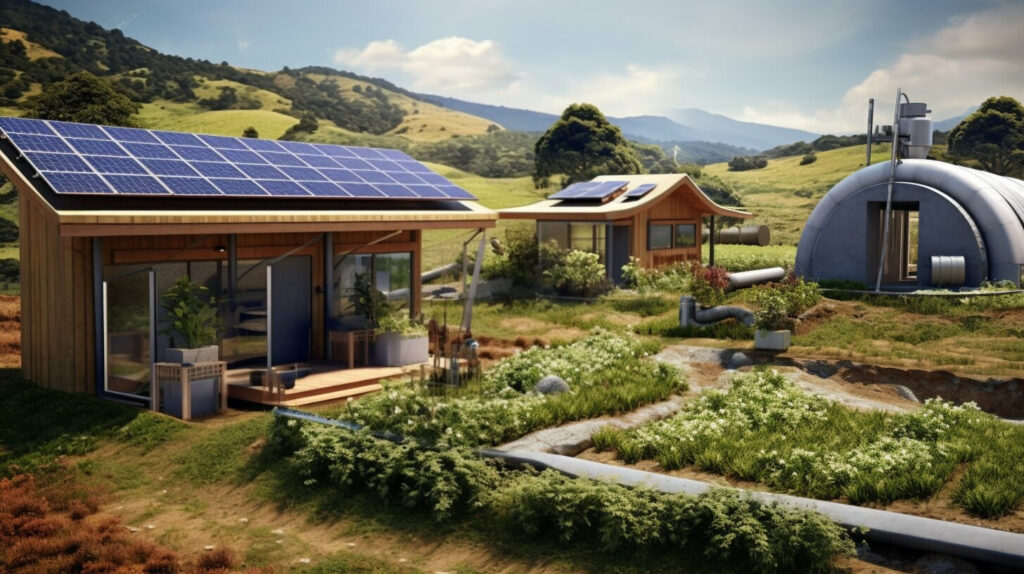
Greywater recycling is also an essential part of off-grid waste management. Greywater is wastewater from sources such as sinks, showers, and washing machines. This water can be reused for outdoor irrigation with the help of a greywater recycling system. This system filters and treats the water before it is reused, reducing water consumption and limiting environmental impact.
Managing waste sustainably is equally important. Recycling, composting, and reducing waste are all crucial aspects of eco-friendly housing. Consider installing a composting bin for food waste and utilizing eco-friendly cleaning products to reduce toxic chemical waste. By minimizing waste and managing it responsibly, you can reduce your environmental impact and lead a more sustainable off-grid lifestyle.
Choosing Sustainable Building Materials
When building a sustainable off-grid home, one of the most critical decisions you will make is selecting the right building materials. To ensure a green home design and energy-efficient construction, consider using sustainable building materials that lessen environmental impact and contribute to a healthy indoor living environment.
Sustainable building materials are those that minimize waste and environmental impact during the production process and throughout the lifespan of the building. These materials include recycled and reclaimed wood, bamboo, rammed earth, and locally-sourced materials. Choosing sustainable building materials for your off-grid home can significantly reduce your carbon footprint and promote a healthy ecosystem.
Using sustainable construction materials can also help reduce energy consumption. By incorporating passive house design principles and using high-performance insulation and windows, you can reduce heating and cooling energy consumption, leading to lower energy bills and greater energy efficiency.
It’s essential to consider the durability of the materials you choose. Durable materials last longer and require fewer replacements, reducing waste and maintenance costs. For example, using metal roofing instead of asphalt shingles can provide better protection and a longer lifespan.
When choosing sustainable materials, consider their embodied energy. This refers to the amount of energy required to extract, manufacture, and transport the material. Choose materials with lower embodied energy, like adobe or straw bale, to lessen your off-grid home’s carbon footprint further.
By choosing sustainable building materials and incorporating green home design principles, you can create an eco-friendly dwelling that significantly reduces your environmental impact and provides long-term benefits for you and the planet.
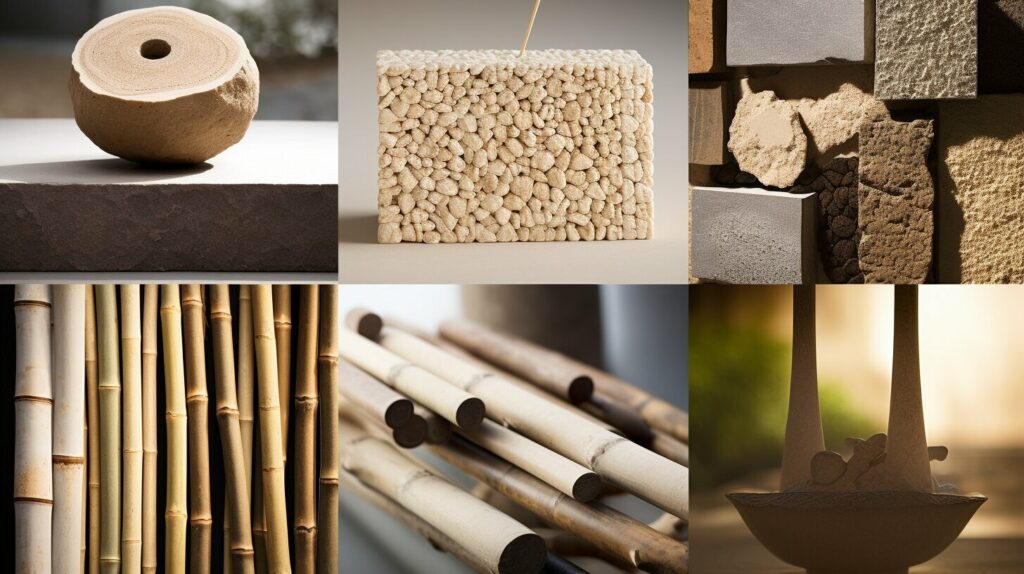
Off-Grid Systems and Technology
Living off the grid requires a certain level of self-sufficiency, and implementing off-grid systems and technology can help you achieve that. In addition to renewable energy sources, there are several other systems and technologies that you can incorporate into your home to make it more efficient and sustainable.
Battery Storage
One of the most important off-grid systems is battery storage. Batteries allow you to store the energy produced by your solar panels or wind turbines so that you can use it when the sun isn’t shining or the wind isn’t blowing. It’s important to choose a high-quality battery that can withstand the demands of off-grid living.
Energy Monitoring
Monitoring your energy usage is crucial for off-grid living. By keeping track of your daily energy production and consumption, you can optimize your usage and avoid running out of power. There are several energy monitoring tools available on the market that can help you keep track of your energy usage in real-time.
Efficient Appliances
Investing in efficient appliances is another way to reduce your energy consumption and increase your off-grid self-sufficiency. Look for appliances with high energy star ratings, and consider using propane or natural gas for cooking and heating to reduce your reliance on electricity.

“Off-grid living requires a certain level of self-sufficiency, and implementing off-grid systems and technology can help you achieve that.”
By incorporating these off-grid systems and technologies into your home, you can maximize your renewable energy sources and reduce your reliance on traditional utilities, making your off-grid living experience more sustainable and cost-effective.
Creating an Eco-Friendly Landscape
When it comes to building a sustainable off-grid home, it’s not just the house that matters. The landscaping around your home can also play a crucial role in promoting an eco-friendly lifestyle. By incorporating the following techniques, you can create an outdoor space that aligns with your sustainable living goals.
Choose Native Plants and Drought-Resistant Species
Native plants are ideal for landscaping because they are already adapted to the local climate and soil conditions. They are also more resistant to pests and diseases, which means you will not need to use as many chemical pesticides and fertilizers. Additionally, choosing drought-resistant species can reduce water usage and help conserve this valuable resource.

Permaculture is a design principle that emphasizes working with, rather than against, nature. By using permaculture techniques like composting, natural pest control, and crop rotation, you can create a sustainable outdoor space that supports biodiversity and conserves resources.
Incorporate Rainwater Harvesting
Rainwater harvesting involves collecting and storing rainwater to be used for irrigation or other non-potable purposes. By incorporating rainwater harvesting systems into your landscaping, you can reduce your dependence on traditional water sources and conserve this precious resource.
Minimize Hardscaping
Hardscaping refers to the use of non-plant elements like concrete, stones, and bricks in landscaping. While hardscaping can add aesthetic value to your outdoor space, it can also increase water runoff and reduce the amount of green space. By minimizing hardscaping and maximizing greenery, you can create an outdoor space that promotes sustainable living.
Create a Wildlife Habitat
By designing your landscaping to support local wildlife, you can help maintain biodiversity and promote sustainable living. Incorporating features like bird feeders, nesting boxes, and water sources can attract a variety of animals to your outdoor space.
By following these techniques, you can create an eco-friendly outdoor space that aligns with your sustainable living goals. Not only will you be promoting sustainability, but you will also be enhancing the beauty and biodiversity of your surroundings.
Building Codes and Permits
Building a sustainable off-grid home comes with legal requirements that you need to be aware of. While building codes and permits vary by state, it is essential to check with your local authorities to ensure compliance.
One of the significant hurdles off-grid homeowners face is obtaining building permits. Some areas have strict regulations that prohibit or limit the construction of off-grid homes. Others require permits for everything from digging a well to building a composting toilet.
If you are planning to use sustainable building materials, it is also important to ensure that they meet the local codes and regulations. While some areas permit unconventional materials like straw bale or rammed earth, others require more traditional building methods.
It’s essential to work with an architect or builder who has experience with building off-grid homes and navigating the permit process. They can help you understand the requirements and expedite the application process.
By following the appropriate building codes and regulations, you can ensure that your sustainable off-grid home is safe, legal, and built to last.
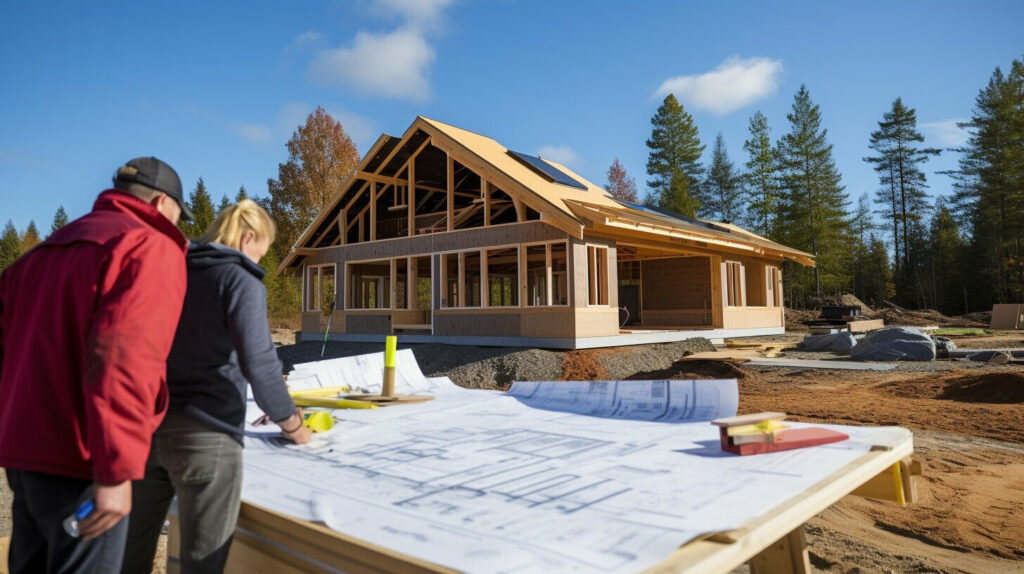
Conclusion
Building a sustainable off-grid home is more than just a housing choice. It is a lifestyle that promotes self-sufficiency, energy efficiency, and eco-friendliness. By utilizing sustainable building materials, harnessing renewable energy sources, and implementing water and waste management systems, you can create a home that aligns with your values while reducing your environmental footprint.
Off-grid living requires a bit of adjustment, but it ultimately pays off in the form of reduced energy bills and a lower impact on the environment. With the help of off-grid systems and technology, you can optimize your energy usage and ensure you have access to power even in remote locations.
Embrace Sustainable Living
Creating an eco-friendly landscape around your home is another great way to promote sustainable living. Planting native species, building rainwater collection systems, and conserving water can all help to enhance the ecological balance of your surroundings.
Before embarking on your off-grid home building journey, it is important to research and understand the legal requirements and regulations associated with building an off-grid home. Learning about building codes, permits, and zoning restrictions can help you stay compliant while maintaining your sustainable living goals.
In conclusion, building a sustainable off-grid home is a powerful way to live independently and sustainably while minimizing your impact on the environment. By following the principles of sustainable living, you can create your dream home that aligns with your eco-friendly values.
FAQ
Q: Can I build an off-grid home in any location?
A: The feasibility of building an off-grid home depends on various factors such as local building codes, access to resources, and the suitability of the land. It’s important to research and consult with professionals to determine the viability of your desired location.
Q: What are the advantages of off-grid living?
A: Off-grid living offers several advantages, including reduced reliance on traditional utilities, lower energy bills, increased self-sufficiency, and a smaller environmental footprint. It allows you to live independently and sustainably while preserving the environment.
Q: How do I access electricity in an off-grid home?
A: Off-grid homes typically rely on renewable energy sources such as solar panels or wind turbines to generate electricity. These systems convert the sun’s energy or wind’s power into usable electricity, providing a sustainable and reliable source of power.
Q: Can I have modern amenities in an off-grid home?
A: Yes, it is possible to incorporate modern amenities in an off-grid home. With advancements in technology, you can have appliances, internet connectivity, and other conveniences while still living off the grid. Energy-efficient appliances and systems are recommended to optimize energy usage.
Q: How do I manage water and waste in an off-grid home?
A: Off-grid homes employ various techniques to manage water and waste sustainably. Rainwater harvesting systems can collect and store rainfall for household use, while composting toilets and greywater recycling systems help minimize water usage and reduce environmental impact.
Q: Are there any financial incentives for building an off-grid home?
A: The availability of financial incentives for building an off-grid home may vary by location. In some areas, there are tax credits, grants, or rebates available for implementing sustainable practices or using renewable energy sources. Research local government or utility programs to explore potential incentives.
Q: What are some common challenges of off-grid living?
A: Off-grid living can present challenges such as the initial higher upfront costs of setting up renewable energy systems, the need for regular maintenance of off-grid systems, and potential limitations in resource availability. However, with proper planning and preparation, these challenges can be overcome.
Q: How can I ensure my off-grid home is environmentally friendly?
A: Choosing sustainable building materials, incorporating energy-efficient design principles, and utilizing renewable energy sources are key factors in ensuring your off-grid home is environmentally friendly. Additionally, implementing water and waste management systems and embracing eco-friendly landscaping practices can further enhance sustainability.

